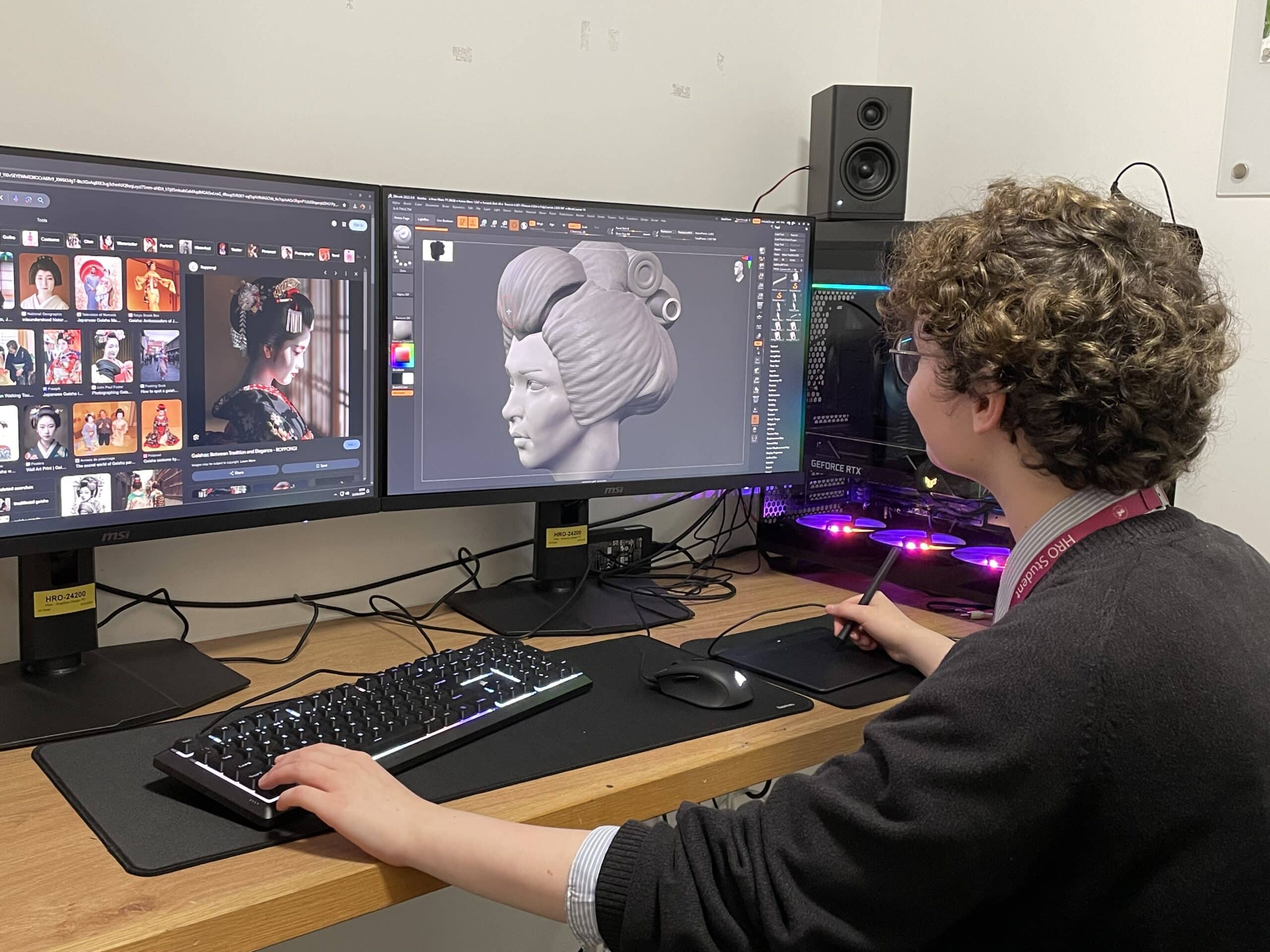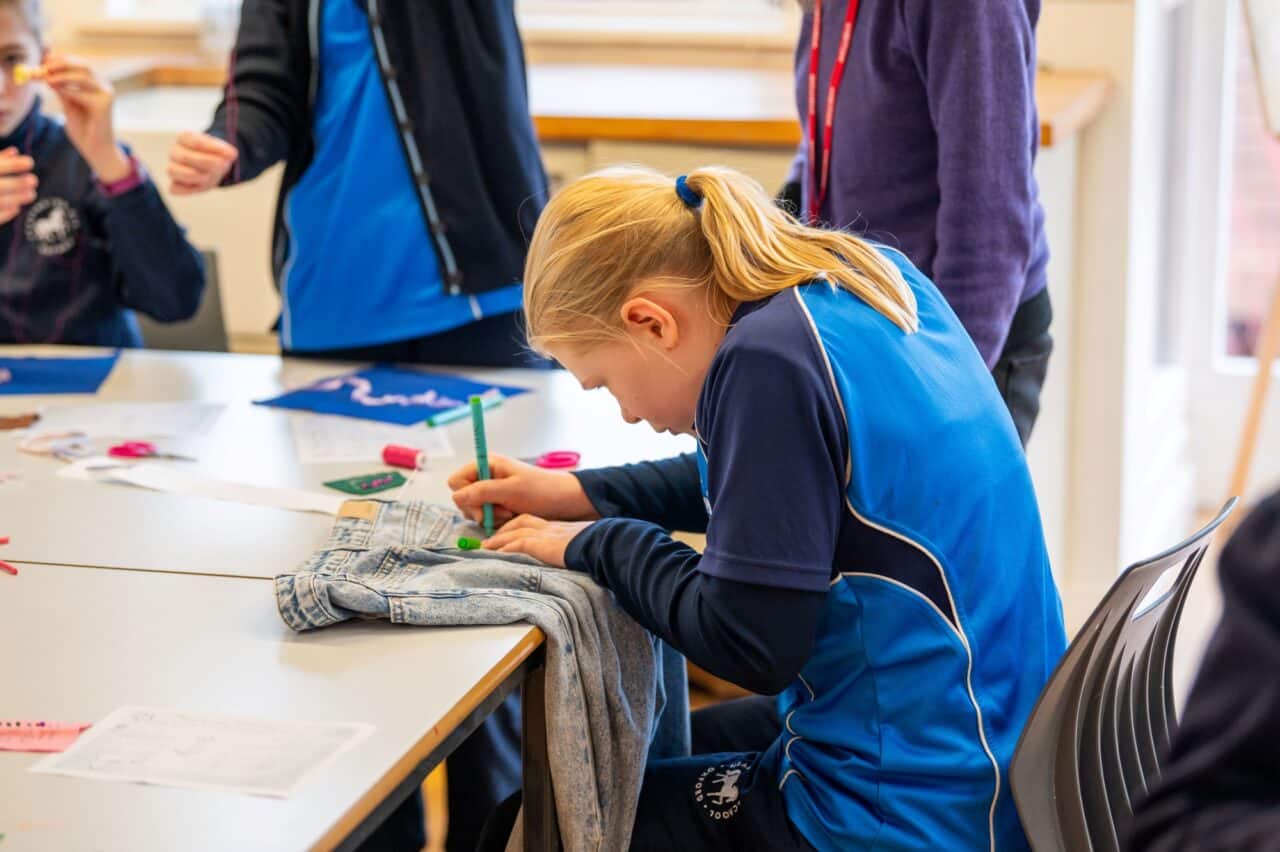This is NOT Photography
Not any more, it isn’t!
It used to be. When I arrived at Headington in the September of 2000, Photography was precisely what it was. We had a darkroom in the ‘old’ Art School (which then was the ‘new’ Art School as it had only been open about three years or so!) and all the work was with manual, film SLR cameras (usually Pentax K1000s – anyone remember those?) and invariably 35mm. The darkroom was fairly small with three or four enlargers, but we could develop Black and White film and print images up to 16 x 12 inches on either resin-coated or fibre-based papers.
We had no studio, so ‘still life’ shots had to be created on A0 or A1 paper backgrounds and other shots created using whatever we had available or planned with the teacher (just me!) and shot in the students’ own time.
To understand how much things have changed we have to go back to the Year 2000…. It was the start of the new millennium, Tony Blair was three years into his first term in office, the Tate Modern opened and ‘Big Brother’ was airing its first series. The Sydney Olympics were held this year, the average house price for a three-bedroomed semi-detached home was around £80,000 and petrol was about 70p a litre. On a more serious note, 9/11 would happen almost exactly one year after I started at Headington.
Technology has, as usual, seen the biggest change though. Mobile phones were around and the ground-breaking Nokia 3310 was released in 2000 to compete with other Motorola and Ericsson models. The first Blackberry, the 850, was announced and was the first to have email compatibility, although this model was more of a pager and could not actually make calls. The ‘famous’ Blackberry models were still a few years away. Incredibly, we would have to wait a further SEVEN years for the first iPhone!
Headington School in 2000 was also quite a different place. Hilary Fender was still the Head (and an exceptional one!), and was bringing the School into the 21st century. In 2000 though, there was no Pi building, no Theatre, and no new dining room (it was still in what is now Science and an enlarged photograph of this in the 1950s can still be seen in the present dining room). There was no Napier House, no Diamond Block, no new Library, no ‘Cube’ in the Sixth Form, no new Gym or Dance Studio, no Hive and no state-of-the-art Rowing facility or Boat House.
Where cameras were concerned, the digital camera had been invented by Kodak in 1975. Digital cameras were widely available by 1995, but these were expensive and, at the lower end, produced low quality images. Indeed, in the department I believe we still have the first digital camera that Headington School possessed. Each shot was about 1 megapixel and it stored the images to a ‘floppy disc’! A disc held a maximum of four or five shots. In 2000 Nikon announced the D1 which was the first DSLR to rival a film camera, but was eye-wateringly expensive at £4,000 plus lenses (equivalent to over £8,000 in 2024).
A breakthrough came in 2004 with the Canon EOS300D, which is considered to be the first, affordable digital SLR camera. This is credited with a glut of 35mm film cameras flooding the second-hand market as keen photographers upgraded to the new technology. Even so, this cost £1,000 in 2004, so still pretty expensive.
Within the Art Department, we started the transition to digital around 2005, but still used the darkroom and 35mm film cameras. Within a few years there was pressure to go completely digital and lose the darkroom and, indeed, part of it was converted to alternative use in around 2011.
Soon after this, however, we gained a studio as the IT Department very kindly gave up a storage room at the top of the Diamond Building, which we converted. We still only had one studio light but managed to secure some background screens. All this enabled the students to be more ambitious in their work. It also meant we could run more clubs and also that art and fashion students could use the facility for both their project development ideas and shots for their portfolios for Higher Education applications.
Around 2017-2018, although results were good, a number of pressures meant that the course was reassessed. IB (the International Baccalaureate) had been introduced, which put pressures on numbers, and the Exam Board marking scheme was such that gaining top marks was becoming increasingly difficult. At one point, for several years, each project was marked out of 80, and in Photography 79 was needed for an A* and 78 for an A grade! Although we had ambitions of moving the course more into the realms of film making, video etc, it was decided at the time that the Photography course should be discontinued.
However, after the pandemic of 2020 and the subsequent construction of the Hive, everything changed! We had insisted on keeping a darkroom and this now has facilities for colour film development and printing for both 35mm and medium format films. This was a quite deliberate decision, not just because analogue skills are very transferable into the digital realm, but because analogue film is also now gaining in popularity as an Art form in its own right, both in stills photography and film making. However, also within the Hive, we have a studio, a creative digital suite and an animation booth. Thanks to a generous donation, we have equipped this fantastic facility with state-of-the-art technology which includes digital cameras, LED studio lights, flash units that can be wifi linked to cameras, a greenscreen, updated Photoshop software, a Black Magic digital movie camera, Da Vinci Resolve Movie editing software and a fully equipped animation booth for 2D and 3D animation with, hopefully, in the future, facilities for Virtual Reality. We now teach a fully rounded ‘Lens Based Media’ Course.
All of this has been enabled and driven by Mark Porter, our superbly talented Art Technician who has a passion for photography and for technology, and Anna Bush, a very talented film and digital photographer, in addition to me – I still get to tinker with my black and white films on occasion! It has also come about due to the foresight of Tova Dalgleish, the Head of the Arts faculty, and also a recognition from the School’s senior management that the Creative Arts have a huge role to play as the world of work changes into the future. All industries will crave individuals who can think laterally and problem-solve creatively, not just logically – and that’s what Arts courses both develop and encourage.
In the past few years, our students from the Lens-Based Media course have gone on to study Film Making at Arts University Bournemouth (perhaps the finest in the country), Concept Art at Flinders University in Australia, Animation at Surrey, Fashion Photography at Falmouth (still the finest Photography college in the country), Marine and Natural History Photography (also at Falmouth, without doubt the best course of its type in Europe!). Current students have diverse interests in Photography (both digital and analogue), Film and Animation. We’ve had people study Photography allied to English who’ve had a future in screenwriting. A current student is studying Lens Based Media, Fashion and Business and is interested in Fashion Marketing – surely a perfect combination for such an ambition? The future is wide open for these students. Opportunities are increasing in Film, the video games market (now bigger than the film and music industries combined) and in all aspects of Photography, from fashion and reportage to commercial and product photography.
The whole philosophy of the Hive and the Creative Arts Faculty is to ensure our students are ‘future-ready’ and to that end all the equipment and facilities of the Hive are of industry standard. They use the equipment and software that they will use at Art school, university and beyond. As far as I am aware, no other schools near Oxford offer such exceptional facilities, especially when combined with our fantastic Fine Art, Fashion Textiles and Creative Engineering Courses.
At Headington Rye Oxford we don’t just have a Photography course…
We have SO much more than that!




